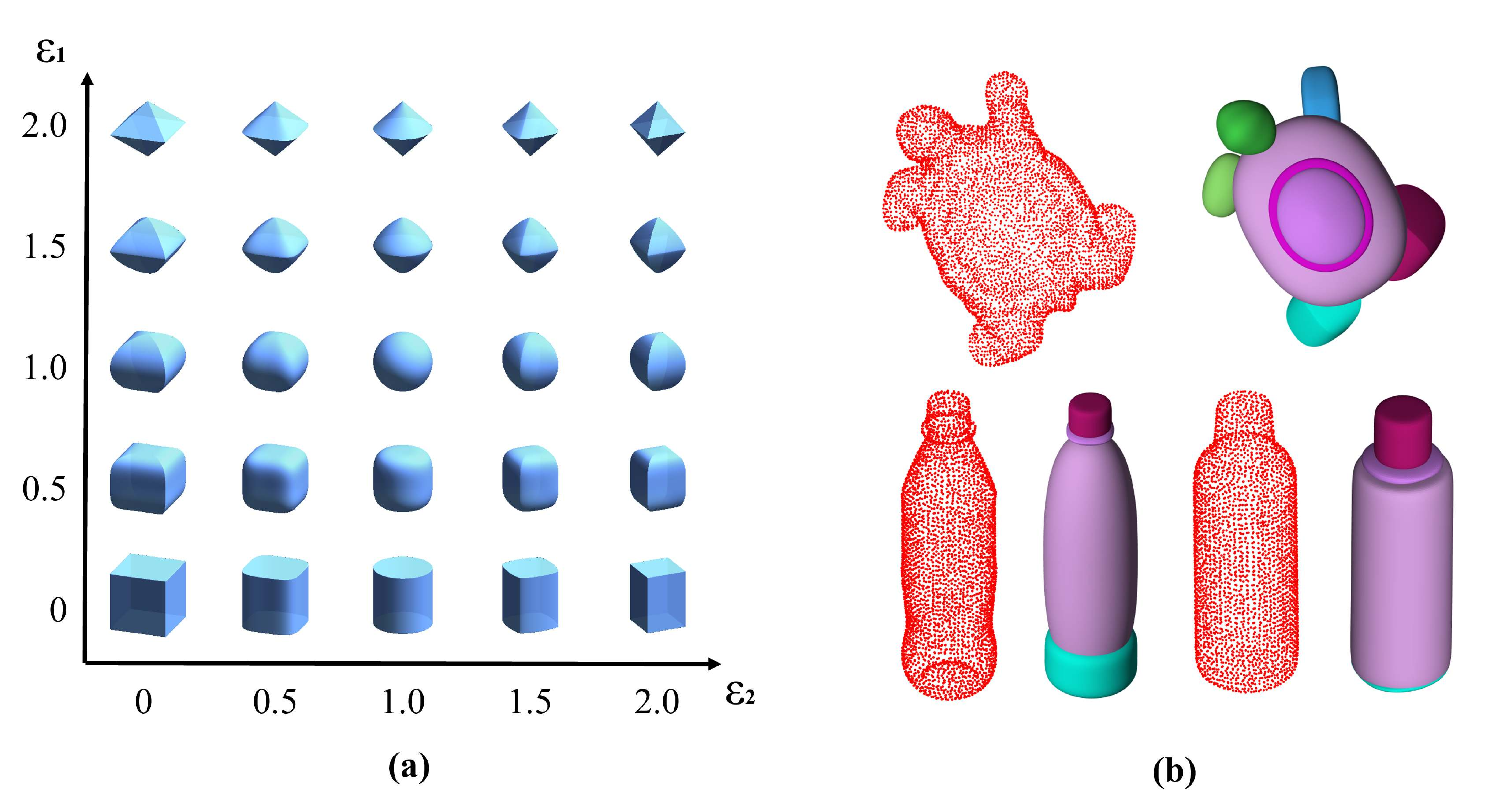Robust and Accurate Superquadric Recovery: a Probabilistic Approach
Interpreting objects with basic geometric primitives has long been studied in computer vision. Among geometric primitives, superquadrics are well known for their ability to represent a wide range of shapes with few parameters. However, as the first and foremost step, recovering superquadrics accurately and robustly from 3D data still remains challenging. The existing methods are subject to local optima and sensitive to noise and outliers in real-world scenarios, resulting in frequent failure in capturing geometric shapes. In this paper, we propose the first probabilistic method to recover superquadrics from point clouds. Our method builds a Gaussian-uniform mixture model (GUM) on the parametric surface of a superquadric, which explicitly models the generation of outliers and noise. The superquadric recovery is formulated as a Maximum Likelihood Estimation (MLE) problem. We propose an algorithm, Expectation, Maximization, and Switching (EMS), to solve this problem, where: (1) outliers are predicted from the posterior perspective; (2) the superquadric parameter is optimized by the trust-region reflective algorithm; and (3) local optima are avoided by globally searching and switching among parameters encoding similar superquadrics. We show that our method can be extended to the multi-superquadrics recovery for complex objects. The proposed method outperforms the state-of-the-art in terms of accuracy, efficiency, and robustness on both synthetic and real-world datasets. The code is at http://github.com/bmlklwx/EMS-superquadric_fitting.git.
PDF Abstract CVPR 2022 PDF CVPR 2022 Abstract